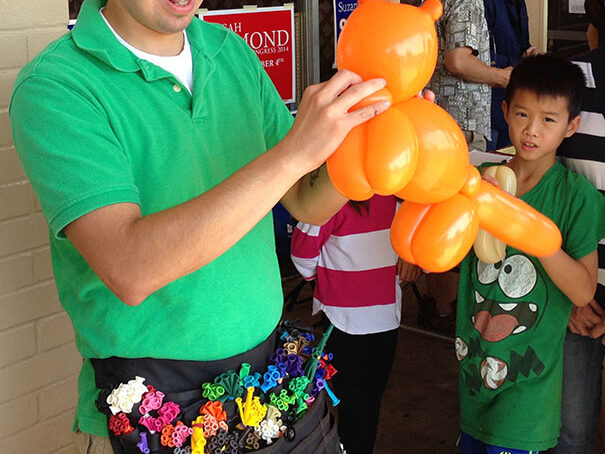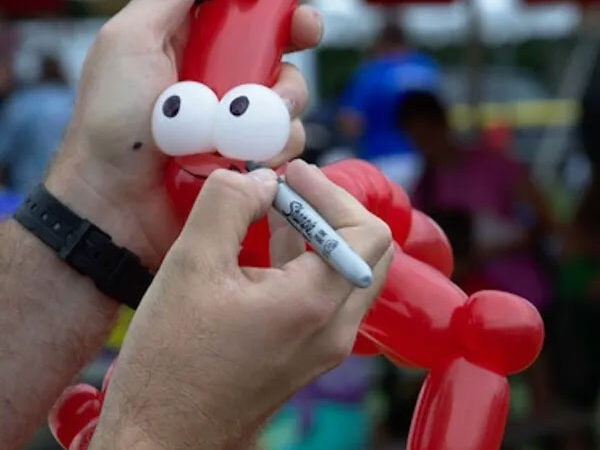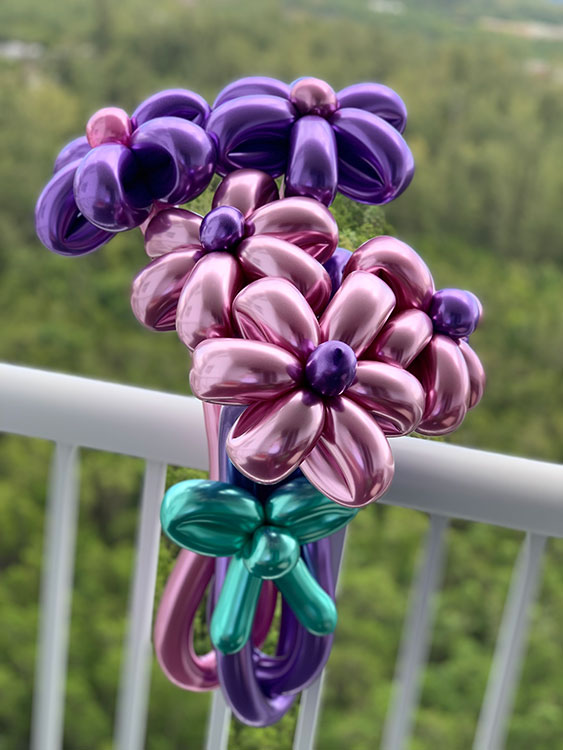About Balloon Twisters
In order to learn about balloon artists, the first question that crops up almost immediately is: What are they called, again?
Depending on who you ask, you’ll get a variety of responses, including balloon sculptors, balloon twisters, modelers, balloon artists, and many more. All of them amount to ultimately the same thing: these wonderful people have mastered the art of silly, whimsical sculptures and toys that can be drawn almost out of thin air.
This practice, pastime, and sometimes full-on job is actually fairly new. Before the advent of elastic and forgiving rubbers in the early 1900s, balloons simply weren’t made to be manipulated into the kids of crazy shapes you see today. While using inflated props and decorations for celebratory or religious ceremonies has existed since ancient times, those “balloons” were often animal intestines or hides – very different from what we enjoy today!
The art came into being through the American circus in the 1930s, with multiple clowns and entertainers all claiming the title of the first balloon twister. Whoever tied the first knot, it took off almost immediately and now children worldwide enjoy balloon twisters at a variety of live events.
One of the earliest practitioners of balloon modeling was a man named Herman Bonnert. In the 1930s, Bonnert developed a unique style of twisting balloons, often creating animal shapes and figures. His performances in circuses and vaudeville shows captivated audiences, and his talent inspired others to explore this emerging art form. Back then, the idea was so new that the balloon twisting would take the form of a stage show, and audiences sat back in amazement watching Bonnert work.
Mostly through word-of-mouth, and a few handbooks and guides published by clowns and circus entertainers, the practice of balloon twisting started to become more prevalent through the 1940s and 1950s, until it evolved from a surprising novelty to an expected feature of the greatest shows on earth.
The 1980s witnessed the rapid expansion of balloon twisting as a form of entertainment. Magicians, clowns, and performers began incorporating balloon twisting into their acts, adding an extra dimension of surprise and delight. The introduction of instructional books, videos, and workshops also played a crucial role in spreading the art form, making it accessible to enthusiasts worldwide. As more people heard about the art, non-carnival affiliated hobbyists began to pick up the craft and try their hand at twisting.
An indispensable piece of silly fun found at carnivals, kids’ birthdays, and festivals worldwide, balloon twisting can take on a greater or lesser degree of complexity depending on the artist.
Some artists prefer to work on installations, large sculptures, or backdrops. These amazing creations can take up to 12 hours and often hundreds of balloons to complete. Larger projects allow the artists to really let loose and have fun, with their creativity leading to incredibly complex and imaginative sculptures. The Twist & Shout Balloon Convention welcomes hundreds of artists for the last 20 years, competing with each other to make the most astounding installations.
Other balloon twisters focus more on party favors, “balloon cups”, and décor for events. These twisters often work from home or an office space, preparing batches of handheld sculptures or mid-size sculpture used as arches, photo backdrops, and accents for events. Increasingly, these options are becoming more popular for birthday parties and weddings due to how customizable and color-specific they can be made.
The event balloon twister, on the other hand, does their work on the spot. Booked by private clients or by large events coordinators, these speedy improvisors often have a wearable kit holding hundreds of different colors and shapes of balloons, ready to take requests from event guests. Working with incredible quickness, and more often than not attracting a pretty large line, event balloon twisters are always a hit with young audiences and oftentimes the older ones, too!
Although the art of balloon twisting may be in its early stages, more and more people are expressing interest and appreciation for the art. This delightful art form has charmed generations and will undoubtedly continue to do so for years to come.








